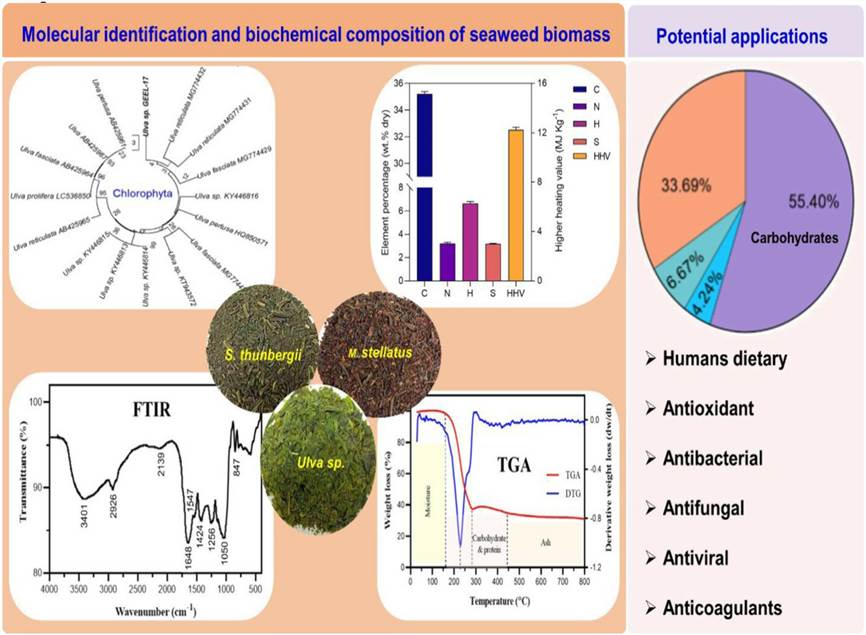Marine seaweeds include several thousand species, which make up a significant portion of coastal biomass. The chemical composition of seaweeds provides their high nutritional value, contributing to human nutrition, such as proteins, all essential amino acids, minerals and vitamins. In addition, they include biologically active secondary metabolites and many different compounds with health benefits. However, some species of seaweeds may contain toxic compounds, limiting the utilization of such seaweeds as food or animal feed. The chemical composition of seaweeds varies, depending on the type of species, the time of collection, the geographical habitat, and many external conditions such as water temperature, light intensity, and nutrient concentration in the water.
 Fig 1. Identification and characterization of marine seaweeds for biocompounds production. (Yang Y, et al., 2021)
Fig 1. Identification and characterization of marine seaweeds for biocompounds production. (Yang Y, et al., 2021)
Currently, only about 20 of the more than 10,000 known seaweed species are cultured, and a comprehensive understanding of the biochemical composition of most seaweed species is lacking. Our goal is to screen the overall biochemical composition of a large number of seaweeds and compare it appropriately with the biomass already used in biological processes to identify species with high potential.
Lifeasible has extensive experience in all aspects of seaweed research. We pride ourselves in providing customized services for identifying and characterizing seaweed biocompounds.
We homogenize seaweed samples in liquid nitrogen and freeze-dry (Heto Drywinner, Allerød, Denmark) at < 0.05 mbar for 3 days with a cold trap temperature of - 55 °C. For larger species, the entire sample collected is homogenized and mixed in one pass to allow representative sampling for water content measurements.
The chemical composition and carbohydrate content of seaweeds varies and is highly dependent on species, geographic region, and season. We offer a variety of methods to characterize the biochemical composition of seaweeds.
Our solution for identifying and characterizing seaweed biocompounds has screened, characterized, and evaluated three different phyla of seaweeds for their potential applications. Our customer service representatives are enthusiastic and trustworthy 24 hours a day, 7 days a week. If you are interested in our services, please feel free to contact us for more information or to discuss in detail.
Reference